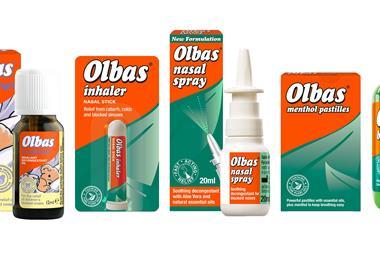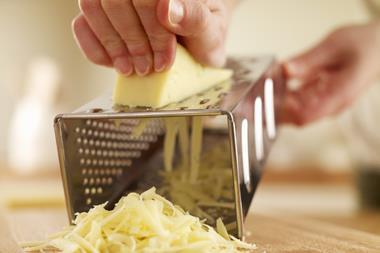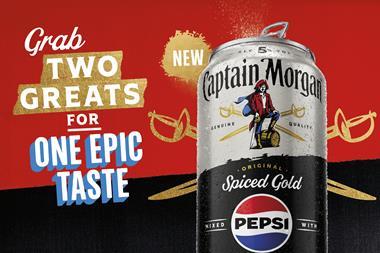Many retailers regard the babies and toddlers category with suspicion, but it can prove profitable if you get it right. Kate Miller reports
Birth rates are booming. According to the Office of National Statistics (ONS) there were 690,013 live births in 2007, which is the highest level since 1991. Figures for last year also reveal that there was an average of 1.91 children per woman in England and Wales - the highest number since 1973 (when it was two per woman). There are obviously regional variances to these figures
so retailers in Bedfordshire, for example, would do well to stock
up on baby products as one local hospital reported a 30% boom in births.
The trend is echoed in sales of baby-related merchandise. According to Mintel, sales of baby food and drinks increased by 36% from 2002 to last year, with growth accelerating between 2005 and 2007 when sales rose by more than 19%. The increased use and availability of follow-on and growing-up milks saw this category grow from 45% to 49% of value during the same period even though rates of breastfeeding have risen since 2005.
Given all the good news it's perhaps surprising that many retailers seem reluctant to enter the market. Nutricia trade sector manager Sue Nash says that the sheer amount of products available, intended for separate need states, may put some retailers off. "When you talk to shop owners there is a perception that it is a complicated market." But she says it's a profitable one: "Research points to this category as a top-up shop with
a high basket spend. And it's not difficult to get right. We definitely see a huge opportunity in baby food in convenience. It's the fastest growing sector and it will overtake nappies in 2009. Convenience clearly under-trades in this area."
The key thing, says Nash, is getting the right key products in groups: "In milk you should have SMA and Cow & Gate. Research shows that mums won't switch brands if they can't find what they're looking for, they'll go elsewhere. In food you should have Heinz and Cow & Gate."
She points out that mothers won't just be looking for a brand but for the life stage of milk as well. Mothers with toddlers will be looking for a variety of age groups, meal occasions and flavours. She says the company would typically recommend a one-metre bay of babycare to have nappies, wipes and toiletries all merchandised together. "It makes it easy for mum to see what's there. And put it in a location where mums can actually see it and can get to it with a buggy."
Nisa-Today's trading controller Yvonne Reid says that it's important for a c-store to cater for distress purchases. In nappies retailers should stock packs as large as space permits, in toiletries there should be a range including nappy cream, cotton buds, oil, powder and wipes, while milks should include first milks and follow-on if space allows. As well as meals to cover all needs, there should also be a range of juices. If retailers have space for healthcare and accessories this can include bottles, soothers and
toddler feeding accessories. Reid explains: "While accessories represent the smallest retail value, convenience stores tend to trade better in this area than other store types within the Nisa membership. A small range is all that's needed, including soothers, trainer cup, bottles and teats."
One Spar wholesaler which has really taken the plunge into upping its baby and toddler offering is CJ Lang. Trading support controller Mike Leonard says that the decision to improve the offering has paid off: "It's a positive time for us. I made the decision a year ago that we should be doing better in baby and we have strategically developed the category. On the back of that we've seen 20% growth."
To start he says the wholesaler looked at the competition and what the multiples were doing, identifying relevant gaps. The result was larger bays and a wider offering: "We made the decision to give a maximum two-metre bay with six shelves to baby products and in smaller stores, one metre with two shelves, with lines running across babyfood, nappies and babycare, toiletries, milk bottles, teats and bibs. The latter are slow sellers but you have to offer the whole range - if you only offer half people go elsewhere."
He says that while some retailers may baulk at giving over this amount of space he reckons it's about more than just sales: "Baby products are never going to deliver the turnover that other lines offer. But I'm trying to push the boundaries. It's about credibility."
The tactic has proven profitable for one CJ Lang store - Spar Mastrick just outside Aberdeen. The store covers around 3,000sq ft and is situated in a built-up area. It increased its one-metre babycare bay to two metres five months ago with a resulting sales increase of 140%.
Manager Pam Worsley says that as well as increasing space, the store has also revamped the range: "The company brought in the organic Hipp baby food range and whereas before we had Huggies nappies, we now stock Pampers, too. We also just had baby shampoo before and now we've got lotion and oil."
She says that the only slow sellers are cheaper products: "When you're a mum you look for the quality, especially when they're so small - you want to do your best."
This, she says, is something that all retailers thinking of entering this market must remember.
Earlier this year Cow & Gate launched its Good Night Milk. The milk is designed as a follow-on milk to help settle babies as part of their bedtime routine.
New launches this year from P&G have included new pack sizes of Pampers Active Fit nappies backed by TV in April. In other baby- and toddler-related areas the company added to the £13.5m kids wipe category with textured toilet wipes and brightly coloured soap in the Pampers Kandoo range. For babies, new Pampers Sensitive Wipes were added to the range in March.
New launches from Kimberly-Clark over the past couple of months include Huggies Little Swimmers Extra Small for babies under six months. New on shelf last month was Huggies Newborn with extra softness and natural fit.
This month sees the launch of Huggies Pull Ups Night-Time, a new potty training pant.
Yoplait's 'Calcium Every Day - The Easy Way' initiative is aimed at encouraging children to have three portions of dairy a day. The company wants to grow the market by 20% in the next three years. The initiative was launched through the Petits Filous brand. Marketing support will include TV, sponsorship, web and PR.
Sudocrem is launching a new ad which will show how the brand can treat nappy rash. It will run from August to September.
Calpol is being backed by an £8m media investment in 2008. Calpol Sixplus sugar-free suspension will be launched on general sale in the autumn.
Birth rates are booming. According to the Office of National Statistics (ONS) there were 690,013 live births in 2007, which is the highest level since 1991. Figures for last year also reveal that there was an average of 1.91 children per woman in England and Wales - the highest number since 1973 (when it was two per woman). There are obviously regional variances to these figures
so retailers in Bedfordshire, for example, would do well to stock
up on baby products as one local hospital reported a 30% boom in births.
The trend is echoed in sales of baby-related merchandise. According to Mintel, sales of baby food and drinks increased by 36% from 2002 to last year, with growth accelerating between 2005 and 2007 when sales rose by more than 19%. The increased use and availability of follow-on and growing-up milks saw this category grow from 45% to 49% of value during the same period even though rates of breastfeeding have risen since 2005.
Given all the good news it's perhaps surprising that many retailers seem reluctant to enter the market. Nutricia trade sector manager Sue Nash says that the sheer amount of products available, intended for separate need states, may put some retailers off. "When you talk to shop owners there is a perception that it is a complicated market." But she says it's a profitable one: "Research points to this category as a top-up shop with
a high basket spend. And it's not difficult to get right. We definitely see a huge opportunity in baby food in convenience. It's the fastest growing sector and it will overtake nappies in 2009. Convenience clearly under-trades in this area."
The key thing, says Nash, is getting the right key products in groups: "In milk you should have SMA and Cow & Gate. Research shows that mums won't switch brands if they can't find what they're looking for, they'll go elsewhere. In food you should have Heinz and Cow & Gate."
She points out that mothers won't just be looking for a brand but for the life stage of milk as well. Mothers with toddlers will be looking for a variety of age groups, meal occasions and flavours. She says the company would typically recommend a one-metre bay of babycare to have nappies, wipes and toiletries all merchandised together. "It makes it easy for mum to see what's there. And put it in a location where mums can actually see it and can get to it with a buggy."
Nisa-Today's trading controller Yvonne Reid says that it's important for a c-store to cater for distress purchases. In nappies retailers should stock packs as large as space permits, in toiletries there should be a range including nappy cream, cotton buds, oil, powder and wipes, while milks should include first milks and follow-on if space allows. As well as meals to cover all needs, there should also be a range of juices. If retailers have space for healthcare and accessories this can include bottles, soothers and
toddler feeding accessories. Reid explains: "While accessories represent the smallest retail value, convenience stores tend to trade better in this area than other store types within the Nisa membership. A small range is all that's needed, including soothers, trainer cup, bottles and teats."
One Spar wholesaler which has really taken the plunge into upping its baby and toddler offering is CJ Lang. Trading support controller Mike Leonard says that the decision to improve the offering has paid off: "It's a positive time for us. I made the decision a year ago that we should be doing better in baby and we have strategically developed the category. On the back of that we've seen 20% growth."
To start he says the wholesaler looked at the competition and what the multiples were doing, identifying relevant gaps. The result was larger bays and a wider offering: "We made the decision to give a maximum two-metre bay with six shelves to baby products and in smaller stores, one metre with two shelves, with lines running across babyfood, nappies and babycare, toiletries, milk bottles, teats and bibs. The latter are slow sellers but you have to offer the whole range - if you only offer half people go elsewhere."
He says that while some retailers may baulk at giving over this amount of space he reckons it's about more than just sales: "Baby products are never going to deliver the turnover that other lines offer. But I'm trying to push the boundaries. It's about credibility."
The tactic has proven profitable for one CJ Lang store - Spar Mastrick just outside Aberdeen. The store covers around 3,000sq ft and is situated in a built-up area. It increased its one-metre babycare bay to two metres five months ago with a resulting sales increase of 140%.
Manager Pam Worsley says that as well as increasing space, the store has also revamped the range: "The company brought in the organic Hipp baby food range and whereas before we had Huggies nappies, we now stock Pampers, too. We also just had baby shampoo before and now we've got lotion and oil."
She says that the only slow sellers are cheaper products: "When you're a mum you look for the quality, especially when they're so small - you want to do your best."
This, she says, is something that all retailers thinking of entering this market must remember.
Baby, it's new
Earlier this year Cow & Gate launched its Good Night Milk. The milk is designed as a follow-on milk to help settle babies as part of their bedtime routine.
New launches this year from P&G have included new pack sizes of Pampers Active Fit nappies backed by TV in April. In other baby- and toddler-related areas the company added to the £13.5m kids wipe category with textured toilet wipes and brightly coloured soap in the Pampers Kandoo range. For babies, new Pampers Sensitive Wipes were added to the range in March.
New launches from Kimberly-Clark over the past couple of months include Huggies Little Swimmers Extra Small for babies under six months. New on shelf last month was Huggies Newborn with extra softness and natural fit.
This month sees the launch of Huggies Pull Ups Night-Time, a new potty training pant.
Yoplait's 'Calcium Every Day - The Easy Way' initiative is aimed at encouraging children to have three portions of dairy a day. The company wants to grow the market by 20% in the next three years. The initiative was launched through the Petits Filous brand. Marketing support will include TV, sponsorship, web and PR.
Sudocrem is launching a new ad which will show how the brand can treat nappy rash. It will run from August to September.
Calpol is being backed by an £8m media investment in 2008. Calpol Sixplus sugar-free suspension will be launched on general sale in the autumn.




























No comments yet